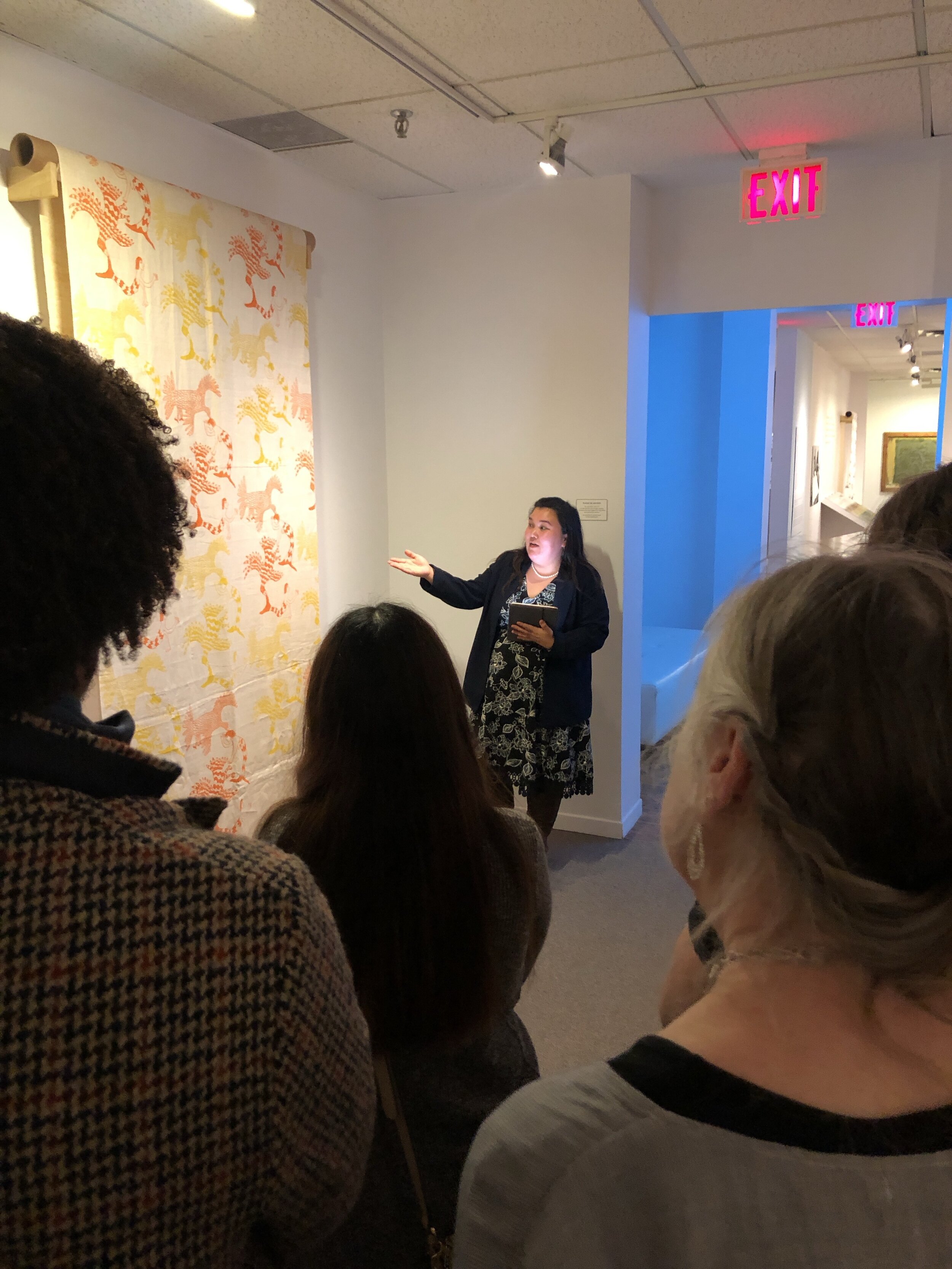Inuit Futures ilinniaqtuit
Photo courtesy of Nakasuk Alariaq
Nakasuk Alariaq
Hailing from Kinngait (Cape Dorset), Nunavut, Nakasuk Alariaq grew up surrounded by artists - including her great-aunt Kenojuak Ashevak – and has always considered Inuit art to be of great importance in her life. Nakasuk speaks proudly of her heritage and of her deep connection to her relatives. She was named after her paternal grandmother and her surname “Alariaq” belonged to the last angaquq (shaman) in her blood line.
Despite her close family ties to one of the most renowned Inuit art centres in Canada, studying art was not originally part of her plan. Growing up as the daughter of hotel owners in her hometown of Cape Dorset, Nakasuk fondly remembers telling visitors to the family business about her career aspirations.
“Some of the earliest memories I have are of telling tourists, ‘One day I am going to be an archaeologist,’” she recalls. “At the time, I thought archaeology meant digging up dinosaur bones, but even when my mom explained it is the study of past human activity and remains, I was still down to be an archaeologist.”
After beginning her education almost entirely in Inuktitut at the Sam Pudlat School in Kinngait, Nakasuk moved away from home to study at the Nancy Campbell Collegiate Institute in London, Ontario, on a bursary when she was in grade nine. Nakasuk remained in London after graduating from high school, first studying Hospitality Management at Fanshawe College before applying to Western University where she completed her BA Honours Anthropology with a minor in Art History and Criticism. Realizing that neither anthropology nor archaeology were right for her, Nakasuk instead decided to follow up her minor by pursuing a Master’s in Art History at Western University.
“I didn’t appreciate how anthropologists that have worked with Inuit communities were not required to report back their research or findings to the people they had worked with,” she says of her change of direction. “I chose to go back to art history because I realized that Inuit were recognized and valued for their contributions in Inuit art, whereas in anthropology, Inuit are the ‘subjects of study.’ The way I view Inuit art is that Inuit have been seen as partners and collaborators in the industry, whereas in Anthropology they have often been taken advantage of as research subjects.”
Since becoming an ilinniaqtuk with Inuit Futures, Nakasuk has been invited to help curate and organize more Inuit art exhibitions. She recently partnered with the Textile Museum of Canada to lead a guided tour of a collection of printed textiles from Kinngait Studios. She was also invited to the 21st annual Inuit Studies Conference in Montreal, Quebec, in October 2019.
“I had only ever met one other Inuk university student while I was at Western,” she says. “Having so many Inuit university students in the same place at the same time at the conference made me feel more confident in myself and the Inuit Studies field in general.”
Going forward, Nakasuk plans to pursue a PhD in Art History at Concordia University and continue working with her friends and colleagues through the Inuit Futures in Arts Leadership: The Pilimmaksarniq / Pijariuqsarniq Project.
“It is about time we have a collective of our own, without it being mediated by systems of thought that tried to oppress us and exterminate our way of life. I cannot wait to see what the Inuit Futures Project will bring to the table next”



